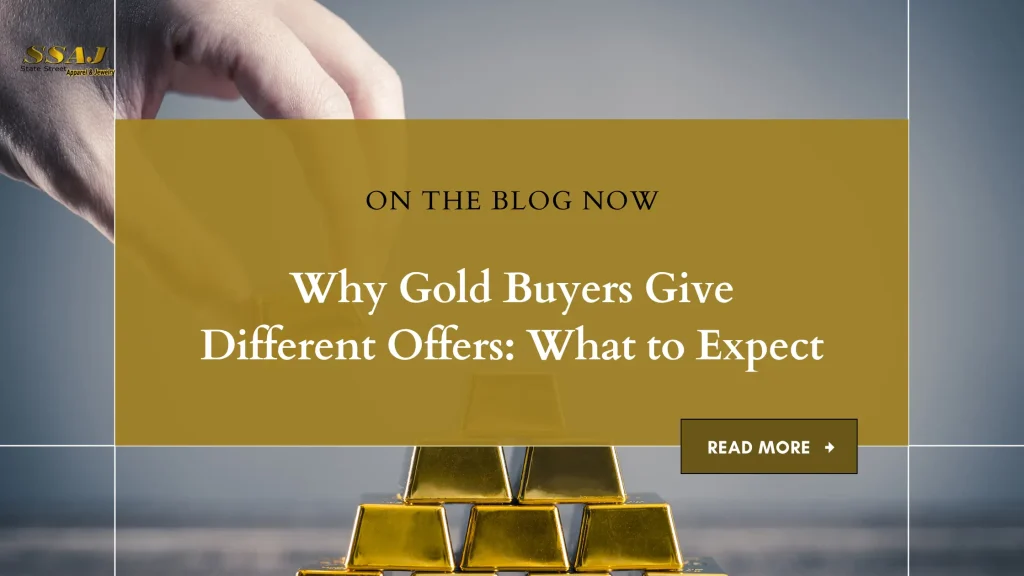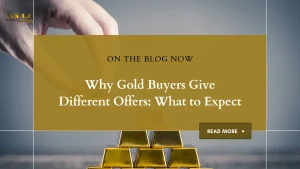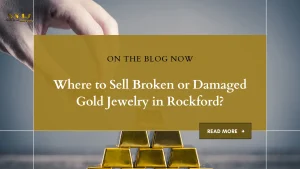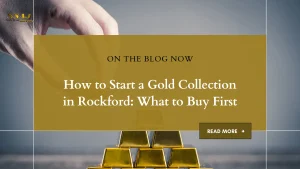When you decide to sell gold, one of the biggest hurdles is the range of offers you’ll get. One buyer may quote a figure that’s far lower than what another promises, and it can feel confusing or even discouraging.
So why does this happen, and what should you expect when you sell your gold? The answer lies in the factors that influence the valuation and pricing of gold.
What Does the Gold Offer Mean?
A gold offer is simply what a buyer is willing to pay you at that moment. It’s not the same as what you paid, what you feel it’s worth, or the gold price you see online. Buyers factor in their costs and risks, so the amount you get is usually less than the market (spot) price.
Factors That Cause Differences in Gold Offers
Here are the main things that lead different gold buyers to quote different offers.
Purity in Terms of Karat / Fineness
Gold purity is one of the most important factors. Buyers first check the karat of your gold, like 24K, 22K, 18K, and so on, or its fineness, which shows the percentage of pure gold in the item.
Higher purity means a higher offer. If jewellery has alloys, stones, plating, etc., they reduce the amount of pure gold; sometimes, parts of jewellery are not gold at all, which lowers the value.
Weight of the Gold
This one seems obvious, like if the item is heavy in its gold content, then you can expect a higher base value. But you have to consider:
- The accuracy of the scale.
- Is the weight only of the gold parts, or including non-gold parts, stones, and clasps? Buyers will often subtract non‐gold weight or exclude it.
- Whether you’re selling small pieces or large pieces, sometimes small items have lower per-gram offers due to processing cost.
Market Spot Price at the Moment
Gold markets fluctuate. The spot price is the current market price for pure, standard gold that changes daily, even hourly. Thus, the buyers offer different pricing because they use different data sources for spotting prices. They might delay adjusting their internal rates.
Moreover, Local economic conditions such as currency rates, import/export duties, and taxes) impact on what price they can realistically pay. Check how gold pricing works.
Local Costs & Overhead
Buyers such as shops, pawnshops, and gold dealers have costs to pay further on staff, rent, electricity, melting/machining equipment, assaying instruments, security, etc.
To make a profit, they deduct a margin. That margin can vary depending on the size of the business, geographic location, regulatory/licensing, import/export/tax charges. These overheads affect how much they can pay you.
Supply & Demand & Market Sentiment
Offers can also depend on supply, demand, and market mood. If demand is low or many people are selling, buyers may pay less. When prices are unstable or expected to drop, buyers usually play it safe, which creates a bigger gap between the market rate and what they offer.
If you want to sell gold in Rockford, IL, like in the local market, the most trusted place is SSAJ. They offer cash in hand and provide appraisals close to the spot price.
Condition & Style of the Piece
Not all gold is valued the same, even if the weight and purity match. Jewelry with stones, enamel, plating, or damage often gets a lower offer because buyers need to remove or repair parts. Some will only pay for melt value, while others may offer more if the piece is in good shape, stylish, or collectible.
Testing Method
To determine purity, buyers use different methods:
- XRF (X-ray fluorescence) is quick and non-destructive.
- Acid test.
- Fire assay method that is more precise but slower/expensive.
Errors, tolerance for test accuracy, or the costs associated with testing can lead to different offers.
What to Expect When Comparing Gold Offers
When you sell gold, don’t expect to get the full spot price that you see online or in the news. Buyers always pay less, and here’s why:
- Jewelry usually sells for less than the market (spot) price. For 18K, expect about 60–90% of the gold value. Lower-purity pieces (10K–14K) get even less.
- Higher purity (22K or 24K) in good condition usually brings better offers.
- Small local shops often pay less, while bigger dealers may pay more since they have stronger resale options.
- Some buyers cut extra for stones, plating, or cleaning, or just to increase profit. Always compare offers before selling.
Common Pitfalls Sellers Overlook While Selling Gold
If you know these pitfalls, you can make sure to get the best possible offer:
- Not knowing the actual purity (thinking it’s 22K when it’s really 18K).
- Selling dirty or damaged jewelry without cleaning it first.
- Accepting the first offer instead of comparing a few.
- Not checking the current gold price before selling.
- Trusting buyers who aren’t transparent with weighing or testing.
Why Online Gold Buyers Sometimes Offer Different Prices
Online gold buyers often give different prices than local shops because they usually have lower costs, access to bigger national refiners, and handle higher volumes. This lets them pay closer to the market price and sometimes offer more per gram. Plus, since it’s easy for you to compare quotes online, they tend to stay competitive.
But online buyers also build in costs for shipping, insurance, and fraud risks, which can lower the offer. Some are more transparent, showing live rates tied to the gold market, while local shops may use older prices or set margins without explaining.
Final Thoughts
Offers from gold buyers differ for many valid reasons. You have to be mindful while selling your gold. For sellers, knowing how offers are calculated and what to watch out for gives you leverage. Always go to a reputable and professional gold buyer, whether online or at a shop.







